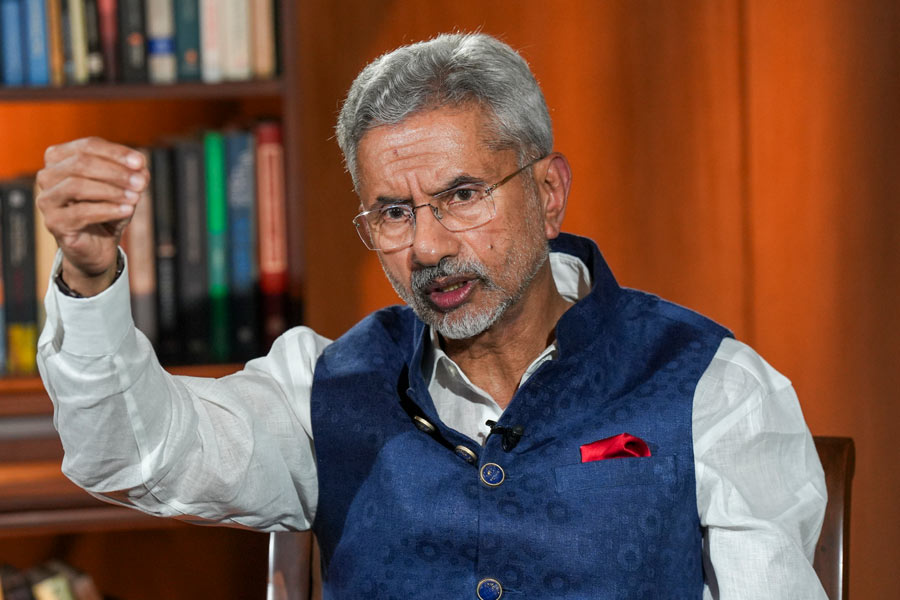 |
No matter what humans do, Nature seems to do it better. The motor has revolutionised human life since it was invented but Mother Nature has been harnessing mechanical power even before there were humans on Earth!
A billion tiny machines — a thousand times smaller than one human hair — work incessantly inside living organisms to keep them going.
An Indian research team led by Roop Mallik of the Tata Institute of Fundamental Research (TIFR), Mumbai, recently opened a new window into the workings of nano molecular motors found in each living cell.
From helping sperm swim towards an egg, to moving neurons long distances to form brain circuits, to fetching disease-causing bacteria so that they can be killed, these motors — or motor proteins to be precise — do it all. Without them, we cannot blink, walk or eat, forget the hundreds of other functions that go on inside our body without our knowledge. And viruses hijack these proteins to get inside a cell and infect it.
Each living cell is amazingly organised. They have several compartments at specific locations, many of which work like specialised factories. The motors transport raw materials required for these factories as well as the finished products created there.
All biological processes require force. For instance, you must generate force to move around. Similarly, cells must generate force to divide. “At a molecular level this force is generated by a motor protein,” says Mallik, a trained physicist who was attracted to biology because of the “challenges” offered by the subject.
There are three different types of motor proteins — dynein, kinesin, and myosin. The force generated by each motor protein is extremely tiny — less than one-trillionth of a Newton. (One Newton is the force required to move an object weighing one kilo to a distance of one metre in a second.) While dyneins move cargo towards the centre of the cell, kinesins move them away from the centre. Myosins are found mainly in muscle cells and are responsible for functions such as walking.
Multiple motors usually have to work in tandem to execute a job. “How these motors team up to generate the required force is extremely important. Our work measures this collective force inside living cells,” explains Mallik.
The work that appeared in the latest issue of Cell journal focuses on dynein, whose working has been a mystery to scientists. Compared to the other two, it is weak and inefficient, but Nature turns to this motor protein when there is need to generate large, persistent forces.
To find how dynein motors work in a team, Mallik’s students, including Arpan Rai, shone a power laser beam on a tiny spot inside a mouse cell. The laser beam could “trap” small objects inside the cells that are moved around by the tiny motors. As the beam fell on them, these motors tried their best to pull objects they were carrying out of the light. “Each dynein showed a special ability to shift gears, just like you shift gears in your car to go uphill. Therefore, each dynein in a team could speed up or slow down… This allowed the dyneins to bunch closer together as they were pulling. The bunching helped dyneins to share their load equitably and work efficiently to generate large forces,” says Mallik.
Apart from Mallik and Rai, others involved in the study are Ashim Rai, Avin Ramaiya and Rupam Jha — all present or former students of Mallik.
“The results are surprising,” says Ron Vale of the department of cellular and molecular pharmacology at the University of California, San Francisco. These tiny motors have been studied outside of cells for many years. However, it has been difficult to understand how they behave inside living cells. “There are two opposing motors that move material in opposite directions inside the cell, but the new study shows that they work very differently. One motor (dynein) is designed to function like a team of well-trained horses. The other motor (kinesin) is better suited for pulling cargo as a solo motor or in small numbers,” Vale says.
“This study sets new standards of how molecular motors can be studied in living cells and provides important insights into how molecular transport is controlled,” Vale adds.
Apart from increasing our understanding of how cells work, the findings may have clinical implications. Dynein is an essential protein and small mutations in it have been found to lead to stunted development in the embryonic stage. Dyneins play a pivotal role in moving neurons over long distances when brain circuits are being formed. Defects in dyneins are known to cause the lissencephaly syndrome — inadequate development of the brain.
“Further research is need to understand what would happen if dynein’s gear fails to work. Perhaps one day antiviral therapies can be developed by specifically inhibiting dynein on a virus. For this, we need to understand how the virus particle hijacks dynein and uses its force to move inside cells,” says Mallik.
This is one motor that still has humans puzzled.










